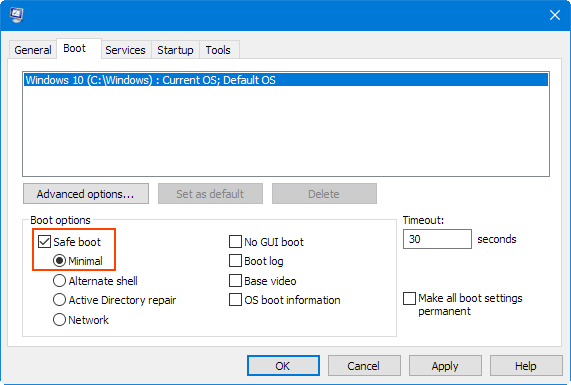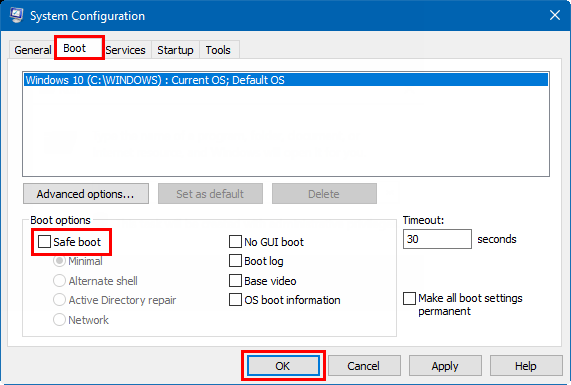Booting into Safe Mode is an effective troubleshooting method for diagnosing issues on your Windows 10/11 PC. By doing so, you can identify the root cause of the problem. This article outlines six methods to boot into Safe Mode in Windows 10/11.
If you can log into Windows normally, use methods 1, 2, 3, or 4. If you're unable to boot normally, use methods 5 or 6. Watch the video below and follow the detailed steps to boot Windows 10/11 into Safe Mode.
The first method involves using the System Configuration tool to enable Safe Mode. This tool allows you to configure Windows to boot into Safe Mode automatically.
Step 1: Open the System Configuration tool by typing 'msconfig' in the search box and pressing Enter.

Step 2: Click on the Boot tab and check the Safe boot box.
You can choose the type of Safe Mode: Minimal, Alternate shell, Active Directory repair, or Network.

Click OK and restart your PC to boot into Safe Mode.

To exit Safe Mode, restart your device or: Press the Windows logo key, type MSConfig, and press Enter. Select the Boot tab, uncheck Safe Boot, and click OK. Then, restart your system to boot back into Normal Mode.

For more information, see how to get Windows out of Safe Mode.
This method involves booting Windows 10/11 into Safe Mode through the Advanced Boot Options menu.
Step 1: Open Advanced Startup options by typing MSConfig in the search box and pressing Enter.

Step 2: Click the Restart now button under Advanced Startup.

Step 3: In recovery mode, click Troubleshoot > Advanced options.

Next, click Startup Settings to change Windows' startup behavior.

Click Restart.

After restarting, select option 4 or press F4 for Safe Mode.
This method uses the 'Shift + Restart' combination to boot into Safe Mode.
Step 1: Hold down the Shift key while clicking the Restart button.

When your computer restarts, you'll see the Advanced Boot Options menu. Follow these steps: Troubleshoot > Advanced Options > Startup Settings > Restart.

After restarting, select option 5 or press F5 for Safe Mode with Networking.
This method uses the command line to reboot into Safe Mode.
Step 1: Press Win+R to open the Run dialog.
Step 2: Type shutdown /o /r and press Enter.

Step 3: Your computer will restart, allowing you to access Safe Mode.
If your PC fails to boot, use Windows 10/11 installation media to boot into the installation environment.
Type bcdedit /set {default} safeboot minimal and press Enter.
When you see 'The operation completed successfully,' close the Command Prompt window and select Continue. Your Windows will boot into Safe Mode after rebooting.

To exit Safe Mode, use the command shutdown /r /t 00 to restart.

This method involves entering the Windows Recovery Environment (winRE) by forcing a fresh boot.
Step 1: Press and hold the power button for 10 seconds to turn off your device.
Step 2: Press the power button again to turn it on.
At the first sign of Windows booting, press and hold the power button for 10 seconds to turn it off again.

Step 3: Press the power button again to turn it on.
When Windows restarts, press and hold the power button for 10 seconds to turn it off.
Step 4: Press the power button again to turn it on.

Step 5: Allow your device to reboot completely, entering winRE.
Now, choose Troubleshoot > Advanced Options > Startup Settings > Restart. After restarting, select option 5 or press F5 for Safe Mode with Networking.

Which method do you prefer to boot Windows 10/11 into Safe Mode? Personally, using the System Configuration tool is the most convenient way.